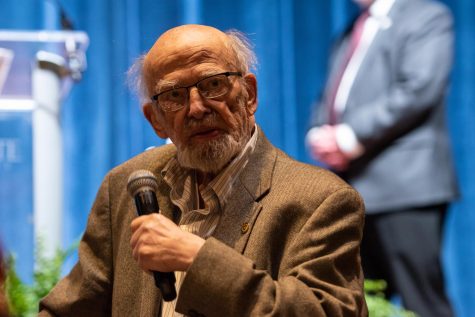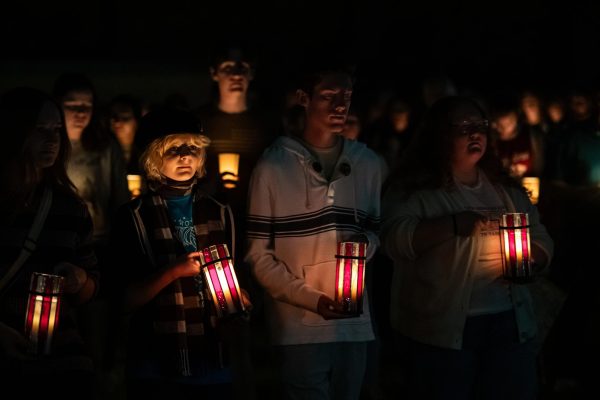High-speed education connection
January 26, 2006
Distance learning has rich past, promising future at Kent State
You don’t have to be there to be there. That’s what distance learning, or DL, is all about.
Through Web-based coursework and videoconferencing, students and teachers can interact without the constraints of space and time.
“The Internet has really exploded opportunity for the use of technology in education,” said Patricia Book, vice president of regional development.
President Carol Cartwright has been a pioneer in DL from the beginning, Book said.
When PCs were not yet readily available to educators, Cartwright and her husband, Phillip Cartwright, wanted to spread the news of their potential uses for educators in their state. The Cartwrights had a truck specially built with wings that expanded out from its sides, creating a place where the new technology could be shown and used, said Book.
“They’d take their equipment around to teachers all over Ohio, then they would fold up their truck and take off,” Book said.
Cartwright has maintained her passion for what potential technology holds for education.
In 1994, Cartwright wanted to “roll out the iLinc program” at Kent State, said John Jewell, associate professor of English at the Tuscarawas campus. She asked Jewell to create the coursework for the first class ever to be taught using the LearnLinc videoconferencing program of iLinc Communications. Jewell was already well-acquainted with distance learning when the university called on him. In the mid-80s he had done a series of cable television classes for college students on a local network. With the help of John Atkinson, now a senior multimedia developer in Educational Technologies and Distance Learning, LearnLinc was launched into use in 1996. According to the Web site for the New Media Center, Kent State’s LearnLinc is now used in 11 countries, and in several states throughout the United States.
The iLinc program itself has a local connection. Kent State graduate Jack Wilson developed the program for use with his physics students at Rensselaer Polytechnic Institute in Troy, New York.
“IBM caught wind of it and snapped it right up, buying the rights for its use,” Jewell said.
As of the Fall 2004 semester, Kent State offered 102 courses using videoconferencing, 324 courses through iLinc and 205 Web-based DL courses, Book said.
“Students do need to have this kind of experience,” Book said. “Most of the major companies in Northeast Ohio have continuing education requirements for their employees. It’s an environment they should be familiar with.”
Jewell agreed.
“I can, I think, guarantee that the big customer for LearnLinc has been not education but big business,” he said. “People used to have to jump in jets and fly around the world, staying in hotels.”
Jewell has given numerous presentations to corporations on the use of LearnLinc, as well as to the U.S. Navy.
“I think it’s going to play a huge role,” he said. “It’s sort of an ancillary bonus that students will be able to say they had experience with this.”
Kent State recently held a retreat for its faculty to present them with some of the possibilities of how they can use DL with their students, said James Gaudino, dean of the College of Communications and Information.
“The conversation continues,” Gaudino said. “I think people realize this is the way of the future.”
Contact features correspondent Theresa Montgomery at [email protected].























